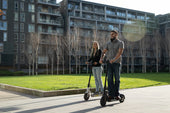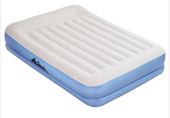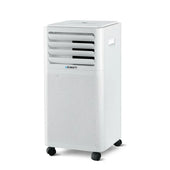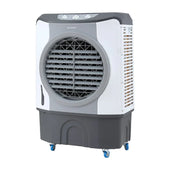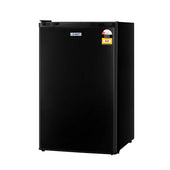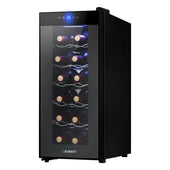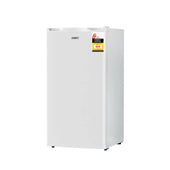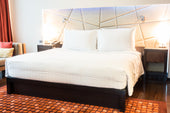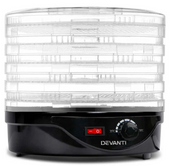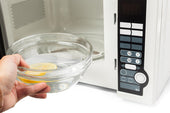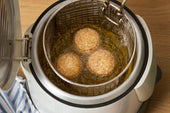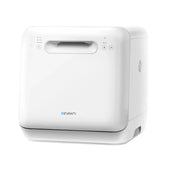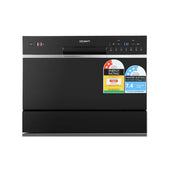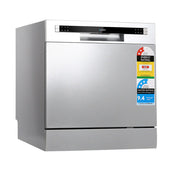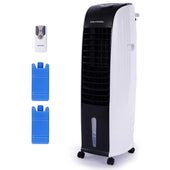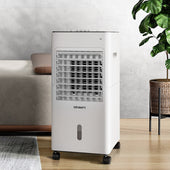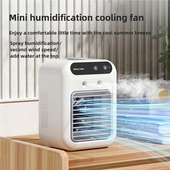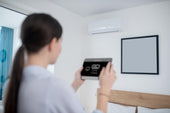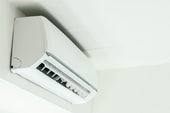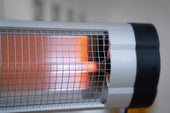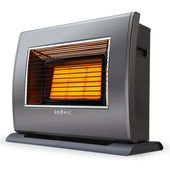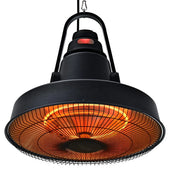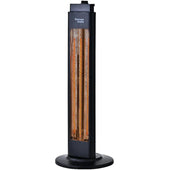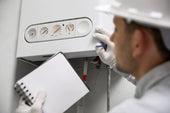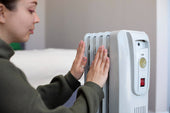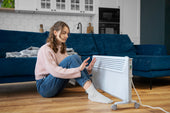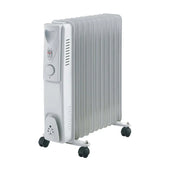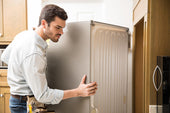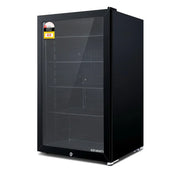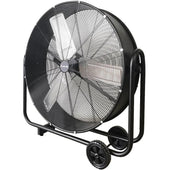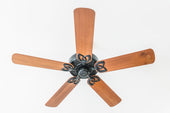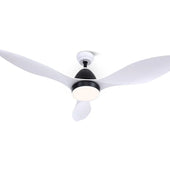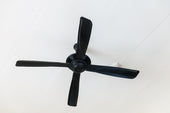Introduction to Evaporative Coolers
Evaporative coolers, often referred to as swamp coolers, are air cooling devices that utilise the natural process of evaporation to lower air temperature. Unlike traditional air conditioners that rely on refrigerants and compressors, these systems use water and airflow to create a cooling effect. They draw in warm air, pass it over water-saturated pads, and release cooler air into the space. This makes them energy-efficient and environmentally friendly.
Ideal for dry climates, evaporative coolers are cost-effective and simple to operate. Their functionality depends heavily on humidity levels, as effectiveness decreases in damp conditions. These coolers are commonly used in homes, offices, and warehouses.
How Do Evaporative Coolers Work?
Evaporative coolers operate by leveraging the natural process of evaporation to cool air. These systems draw in warm air from the surroundings and pass it through moistened pads saturated with water. At During Days, we highlight how as the air moves through the pads, the water absorbs heat, resulting in the evaporation of water and the release of cooler air. This cooled air is then dispersed throughout the space using a blower or fan.
Key elements of the process include:
- Water Reservoir: Stores water to keep cooling pads moist.
- Cooling Pads: Where air and water interact for evaporation.
- Air Fan: Drives air circulation for efficient cooling.
The system works best in dry climates, where humidity is low.
The Science Behind Evaporative Cooling
Evaporative cooling leverages the physical process of water evaporation to lower ambient temperatures. When water changes from liquid to vapour, it absorbs heat energy from the surroundings, creating a cooling effect. This phenomenon is based on the principle of latent heat, where heat is required to transform water into vapour.
In evaporative coolers, a fan pulls hot, dry air through a water-soaked pad. As the air passes through, it evaporates the water, reducing the air’s temperature while increasing its moisture content. This cooling process is most efficient in arid climates, as dry air can absorb more water vapour.
Types of Evaporative Coolers Explained
Evaporative coolers, also known as swamp coolers, come in various designs tailored for different cooling needs. Each type functions on the principle of evaporating water to reduce heat but differs in performance and application.
- Direct Evaporative Coolers: These are the most common and use water-soaked pads to cool air directly. Ideal for dry climates, they are energy-efficient and simple in design.
- Indirect Evaporative Coolers: Here, air passes through a heat exchanger, ensuring cooling without adding moisture. Suitable for humid regions, they address the limitations of direct models.
- Portable Evaporative Coolers: Compact and mobile, these units are ideal for cooling small spaces or specific zones.
- Down-Draft Evaporative Coolers: Installed on roofs, they distribute cooled air downward, covering larger areas.
Key Features of Modern Evaporative Coolers
- Energy Efficiency: Modern evaporative coolers utilise substantially less electricity compared to traditional air conditioners, making them an eco-friendly choice.
- Natural Cooling Mechanism: These coolers use the evaporation process, harnessing water to absorb heat, creating fresh, cool air without chemicals or refrigerants.
- Advanced Filtration Systems: Many units are equipped with filters to reduce airborne pollutants, contributing to cleaner indoor air quality.
- Portability: Compact designs and lightweight construction allow easy movement, making them suitable for various spaces.
- Smart Control Options: Features like remote controls, timers, and smart thermostat integration provide convenience and customisation.
- Quiet Operation: Noise levels are significantly lower, creating a peaceful environment for residential and office use.
- Water-Saving Technology: Enhanced water management systems improve efficiency, lowering water consumption during prolonged use.
Comparison: Evaporative Coolers vs Air Conditioners
Evaporative coolers, also known as swamp coolers, and air conditioners operate using fundamentally different mechanisms. Evaporative coolers rely on the natural evaporation of water to lower temperatures, making them most effective in dry climates where humidity is low. In contrast, air conditioners use refrigerants and a compressor system to cool indoor spaces, making them suitable for diverse climates, including those with high humidity.
Key Differences:
- Cooling Method Evaporative coolers use water and airflow, while air conditioners employ chemical refrigerants to extract heat.
- Energy Usage Evaporative coolers are more energy-efficient, consuming significantly less electricity compared to air conditioners.
- Environmental Impact Evaporative coolers are eco-friendly, as they avoid harmful refrigerants and have a lower carbon footprint. Air conditioners, however, may contribute to greenhouse gas emissions due to refrigerant leaks and higher energy consumption.
- Performance in Humidity Air conditioners maintain performance in humid conditions, whereas evaporative coolers become less effective as humidity rises.
- Initial & Running Costs Evaporative coolers typically cost less to purchase and maintain. In contrast, air conditioners often have higher upfront and operating expenses.
Considerations for Usage:
For cooling a single room in a dry climate, evaporative coolers can be practical and affordable. For broader temperature control, especially in mixed climates, air conditioners may better suit the needs.
Pros of Using an Evaporative Cooler
- Energy Efficiency: Evaporative coolers consume significantly less electricity compared to traditional air conditioning systems. By relying on natural evaporation processes, they help lower energy bills.
- Environmentally Friendly: Without the use of harmful chemicals or refrigerants, these coolers contribute to reduced environmental impact, appealing to eco-conscious individuals.
- Air Quality Improvement: These systems add moisture to dry air, reducing static and providing relief from dryness-related issues such as skin irritation and respiratory discomfort.
- Cost-Effective Operation: Evaporative coolers are generally affordable to purchase and maintain, making them an economical cooling solution.
- Ease of Installation and Usage: Their straightforward setup and user-friendly design allow for hassle-free operation in most homes or offices.
Cons and Limitations to Keep in Mind
- Restricted Effectiveness in Humid Areas: Evaporative coolers work best in dry climates, as high humidity reduces their ability to lower temperatures effectively.
- Limited Cooling Power: Unlike traditional air conditioners, they cannot provide the same level of temperature reduction, making them less suitable for extreme heat.
- Regular Maintenance: Users must periodically clean and replace pads, as dirt and mineral buildup can diminish performance.
- Open Windows Required: Proper ventilation is necessary for optimal functioning, which can allow outdoor heat or pollutants to enter.
- Not Suitable for Year-Round Use: They provide cooling but lack heating capabilities, making them seasonal appliances.
Choosing the Right Evaporative Cooler for Your Needs
Selecting an evaporative cooler involves considering factors such as room size, climate, and intended use. Determining the cooler’s airflow rate, measured in cubic metres per hour (m³/h), is essential to ensure sufficient cooling power for the space. Larger areas typically require higher airflow rates.
Regional climate significantly impacts the cooler’s efficiency. Evaporative coolers work best in hot, dry climates where humidity levels are low. For humid environments, the effectiveness may diminish.
Different types of coolers—portable, window-mounted, or ducted—offer unique advantages. Portables are ideal for small spaces, while ducted systems provide whole-house cooling. Additional features like adjustable fan speeds, water tank capacity, and remote controls can enhance functionality and convenience.
Suitable Climates for Evaporative Cooling Systems
Evaporative cooling systems function best in dry, low-humidity climates where the air can effectively absorb moisture. Regions with hot summers and minimal precipitation, such as arid and semi-arid zones, are ideal. Desert environments, including areas like the southwestern United States, offer optimal conditions due to consistently low relative humidity levels.
In contrast, these systems lose efficiency in humid climates, as the saturated air struggles to take on additional moisture, reducing the cooling effect. Coastal regions, tropical zones, or areas with frequent rain are less suited for evaporative coolers. Proper climate assessments ensure users achieve maximum performance and energy efficiency when deploying these systems.
Energy Efficiency and Cost Savings Explained
Evaporative coolers are recognised for their energy efficiency, primarily because they rely on natural processes rather than energy-intensive compressors. Unlike traditional air conditioners, they use water evaporation to cool the air, which consumes significantly less electricity. This translates to lower monthly utility bills for users, making them an economical cooling solution.
Additionally, operating costs are reduced as these systems have fewer mechanical components, leading to lower maintenance expenses over time. Homes and businesses in dry climates particularly benefit, as these devices perform most effectively under such conditions.
The minimal energy usage also reduces environmental impact, appealing to those seeking eco-friendly cooling methods.
Maintenance Tips for Longer Lifespan
Proper maintenance is crucial to extending the lifespan of an evaporative cooler. Neglecting upkeep can reduce efficiency and lead to costly repairs. Regular cleaning and inspections help maintain optimal performance.
- Clean the Pads: Wash the cooling pads periodically to remove dust, minerals, and debris. Replace worn-out pads as necessary.
- Inspect the Water System: Check the pump, water level, and hoses for blockages or leaks. Ensure the water supply is clean to prevent scaling.
- Check the Fan Blades: Clean dirt from fan blades and ensure they're balanced to avoid strain on the motor.
- Winterise the Cooler: Drain all water and clean the unit thoroughly before covering it during the off-season.
Environmental Impacts of Evaporative Coolers
Evaporative coolers have a relatively lower environmental impact compared to traditional air conditioning systems. These machines consume significantly less electricity, reducing greenhouse gas emissions associated with energy production. Their operation does not rely on refrigerants like hydrofluorocarbons, which contribute to ozone layer depletion and global warming, making them an eco-friendly alternative.
Water usage is a notable consideration. Evaporative coolers require a continuous supply of water for operation, which may impact regions experiencing droughts or water scarcity. Moreover, the materials used for construction, including pads and fans, influence the overall environmental footprint. Transitioning to energy-efficient models and sustainable materials can further minimise ecological impacts.
Common Questions About Evaporative Coolers
Evaporative coolers often prompt various questions due to their unique operation and benefits. Below are answers to some of the most commonly asked queries:
- How do evaporative coolers work? They function by drawing warm air through water-soaked pads, causing evaporation. This process lowers the air temperature, providing cool and moisturised air.
- Are they effective in humid climates? They work best in dry environments. High humidity levels reduce their cooling efficiency.
- Do they use a lot of electricity? They are more energy-efficient than traditional air conditioners, consuming less power.
- What maintenance is needed? Regularly cleaning or replacing pads, maintaining water levels, and checking parts ensure optimal performance.
- Are they environmentally friendly? Yes, they use no harmful refrigerants and have a low carbon footprint.
Final Thoughts: Are Evaporative Coolers Right for You?
Whether evaporative coolers are suitable depends on specific factors that align with their functionality.
- Climate: Homes in arid or semi-arid regions benefit the most since these systems thrive in low-humidity conditions. They are less effective in hot, humid climates.
- Energy Efficiency: These units consume less power than traditional air conditioners, making them an eco-friendly option.
- Maintenance Needs: Regular water refilling and pad replacements are essential for optimal performance.
- Indoor Air Quality: Evaporative coolers provide natural ventilation and add moisture, ideal for spaces prone to dryness.
Consider environmental factors, preferences, and operational needs before deciding if this system aligns with individual cooling requirements.


